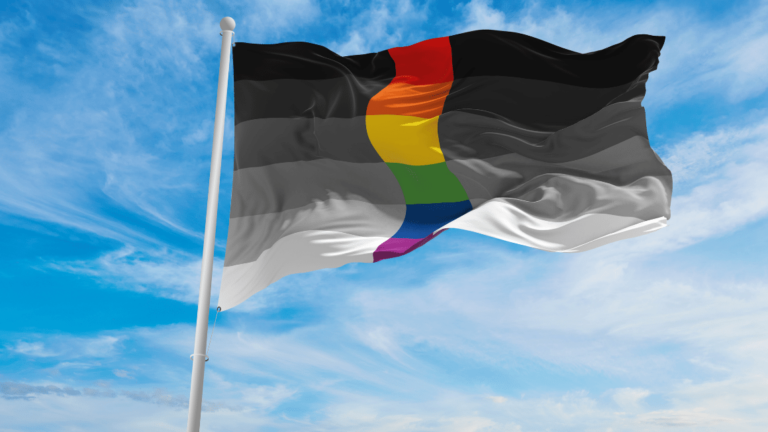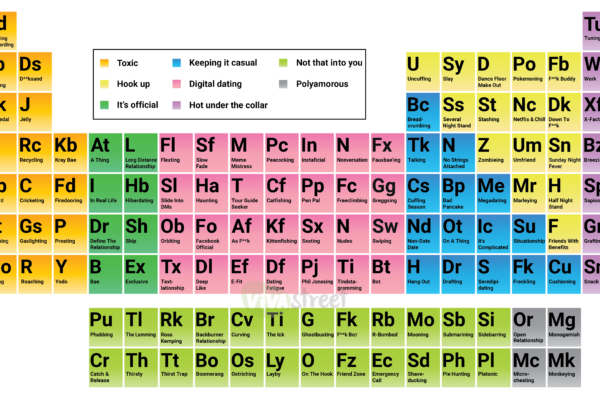One sexual orientation that can leave many people confused is heteroflexibility. It may sound complicated, but it’s actually very easy to understand.
- What is heteroflexibility?
- A brief history of heteroflexibility
- What does heteroflexibility look like?
- How do I know if I’m heteroflexible?
- How to support someone who identifies as heteroflexible
Whether you might be feeling that you are heteroflexible or have a friend that recently came out as heteroflexible, you’ve come to the right place. In this article, we’ll explain what heteroflexibility is, its history, and how to support a person who identifies as heteroflexible.
Read on to learn more.
What is heteroflexibility?
Heteroflexibility is a term used to describe the sexuality of a person who is primarily heterosexual but is occasionally attracted to the same sex. Some people call this sexuality “mostly straight”, which is a great way to describe what it is.
A heteroflexible person is mainly attracted to the opposite sex. The term can, however, take on different meanings as it has yet to be properly defined. In fact, it isn’t used in scientific discussions or studied as intensively as other sexual orientations.
So, different people may have their own definitions of heteroflexibility, which can lead to confusion.
However, the most accepted definition of a heteroflexible person is one that is most attracted to the opposite sex. Heteroflexible people will likely have most relationships with the opposite sex and feel the strongest attraction to them.
But on top of that, heteroflexible people remain open to same-sex sexual encounters. They might primarily get into sexual and romantic relationships with the opposite sex, but they can still get involved with people of the same sex, just not as often.
Even if the concept is yet to be properly studied in the field of sexual psychology, many people resonate with the term. Around 15% of Americans may identify as heteroflexible.
A brief history of heteroflexibility
For most of history, Western cultures have primarily recognised two types of sexuality – heterosexuals and homosexuals. Certain cultures, like Native Americans, had the concept of Two Spirits and were more accepting of non-heterosexual orientations. But many cultures have a strong stigma against any deviation from heterosexuality.
Using heterosexuality as the baseline for normal is very common in many cultures. This phenomenon is known as heteronormativity and has a strong presence worldwide. That said, we have come a relatively long way, even if there is a hard road ahead.
Nowadays, people recognise that gender and sexuality aren’t simple. Gender and sexuality fall under a spectrum, so there might be people on the extreme ends of the spectrum and others who fall somewhere in between.

—
This is where heteroflexibility comes in
The concept of heteroflexibility started to grow in the 90s. One of the earliest definitions of the term comes from a 1997 comedic glossary of LGBT terms that defines heteroflexibility as “bisexual, or at least open to sexual encounters with the same gender”.
From there, the term only grew in popularity. And by the early 2000s, it was commonly used on college campuses in America.
While heteroflexibility is a bit more well-known nowadays, it remains a largely misunderstood concept. So, even if heteroflexibility isn’t used in conversation as much as bisexuality or homosexuality, it’s still a real sexual orientation many people use to identify themselves.
As mentioned earlier, we’ve already come a long way with our views of same-sex and non-heterosexual orientations. However, as you can see with heteroflexibility, we still have a long way to go in terms of understanding, acceptance, and knowledge.
Recently, social scientists have found that many men use heteroflexibility to expand what it means to be heterosexual. These men typically brush off their attraction to men as something that’s only present in the absence of women. That way, they can keep their distance from the bisexual orientation and maintain their heterosexual privilege.
As you can see, heteroflexibility is simple in its definition but very complicated in the real world.
What does heteroflexibility look like?
Heteroflexiblity looks different for everyone. Some people identify as heteroflexible, maintain gender norms, and occasionally entertain same-sex relationships. However, some people are more open with their expression of heteroflexibility but still maintain that they are “mostly straight”.
To better understand heteroflexibility, let’s check out the Kinsey Scale, which can help determine a person’s sexual orientation. The Kinsey scale rates people that are purely heterosexual and will never have same-sex relationships as a “0”. Those that are 100% homosexual and only have sexual relationships with the same sex as a “6”.
A 3 on the Kinsey Scale indicates that a person is bisexual with an equal attraction to both genders. Heteroflexibility is a sexual orientation wherein people are more attracted to the opposite sex but can also engage in sexual and romantic activities with the same sex. On this scale, heteroflexibility lands at around 2.
There are also other cases of heteroflexibility wherein the person doesn’t have any attraction to the same sex. These people may engage in same-sex activities because they work as sex workers or have relationships with a person of the same sex purely for their pleasure without any attraction.
Is heteroflexibility the same as bisexuality?
The community’s opinion on heteroflexibility is a mixed bag. On the one hand, many people accept that heteroflexibility is entirely different from bisexuality. These people argue that many people are primarily attracted to the opposite sex but are still open to the idea of same-sex relationships.
Many experts in the field believe that this can help bring an end to heterosexuality’s dominance. Those that hold this view believe that if more people are open to the idea of heteroflexibility, there will be less of a stigma against homosexuality.
However, there is also another side to the argument. Some argue that heteroflexibility only reinforces heteronormative thinking and the power of heterosexuality. Instead of widening and improving queer acceptance, some say that heteroflexibility only enforces the notion of heterosexual programming.
People on this side of the argument see people who identify as heteroflexible as using same-sex relationships to take a “break from the routine” and as a temporary interruption of heterosexuality.
There are those that believe that some people only identify as heteroflexible to distance themselves from the “homosexual” or “bisexual” term. And while this argument does have merit, there are still many people that would identify as heteroflexible and not bisexual.
Everyone’s brain works differently. Some people have an equal attraction to both sexes, others may feel a very strong attraction to the opposite sex with occasional attraction to the same sex. This is how heteroflexibility differs from bisexuality.
How do I know if I’m heteroflexible?
It can be hard to find out if you’re heteroflexible or not. There is a much wider acceptance of non-heterosexual orientations nowadays, which may encourage some people to try out same-sex relationships.
If you are strongly attracted to the opposite sex but also certain people of the same sex, you may be heteroflexible. Remember, sexual orientation is a spectrum. There is a strong chance that you have an attraction to the same sex that isn’t as strong as your attraction to the opposite sex, which may mean that you are heteroflexible.

—
How to support someone who identifies as heteroflexible
If someone in your life identifies as heteroflexible, the best way to support them is to fully accept them for who they are. Some people may feel hesitant to talk about their heteroflexibility because of preconceived heteronormative notions and the fear that people will question the integrity of their sexuality.
If you want to support a person that identifies as heteroflexible, make sure they know that you accept them and love them regardless of whom they are attracted to. This will make them feel more comfortable and open while eliminating some of the anxiety and shame that may come with a non-heterosexual identity.
Always be understanding
Heteroflexibility is a largely misunderstood sexual orientation. While it may seem similar to bisexuality, heteroflexible people are mostly attracted to the opposite sex but are still open to same-sex experiences with certain people.
Gender and sexual identity are a spectrum. So, people that identify as heteroflexible fall closer to the heterosexual end of the spectrum but are not 100% straight, which is why they are sometimes attracted to people of the same sex.





